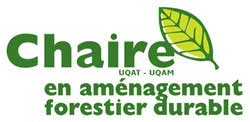Growing pressures linked to global warming are prompting governments to put policies in place to find alternatives to fossil fuels. In this study, we compared the impact of tree-length harvesting to more intensive full-tree harvesting on the composition of fungi residing in residual stumps 5 years after harvest. In the tree-length treatment, a larger amount of residual material was left around the residual stumps in contrast to the full-tree treatment where a large amount of woody debris was removed. We collected sawdust from five randomly selected residual stumps in five blocks in each of the tree-length and full-tree treatments, yielding a total of 50 samples (25 in each treatment). We characterized the fungal operational taxonomic units (OTUs) present in each stump using high-throughput DNA sequencing of the fungal ITS region. We observed no differences in Shannon diversity between tree-length and full-tree harvesting. Likewise, we observed few differences in the composition of fungal OTUs among tree-length and full-tree samples using non-metric multidimensional scaling. Using the differential abundance analysis implemented with DESeq2, we did, however, detect several associations between specific fungal taxa and the intensity of residual biomass harvest. For example, Peniophorella pallida (Bres.) KH Larss. and Tephromela sp. were found mainly in the full-tree treatment, while Phlebia livida (Pers.) Bres. and Cladophialophora chaetospira (Grove) Crous & Arzanlou were found mainly in the tree-length treatment. While none of the 20 most abundant species in our study were identified as pathogens we did identify one conifer pathogen species Serpula himantioides (Fr.) P. Karst found mainly in the full-tree treatment.

